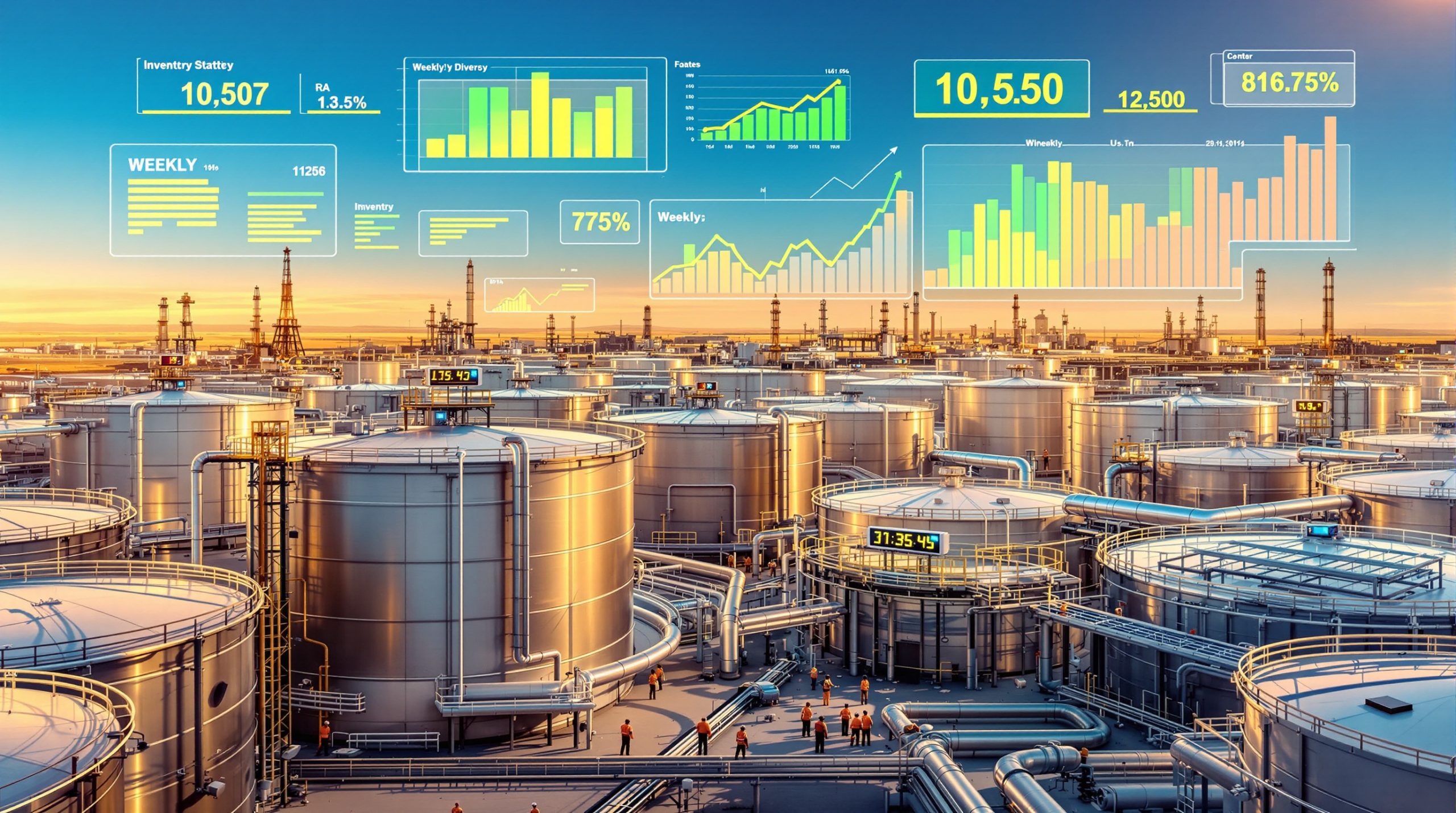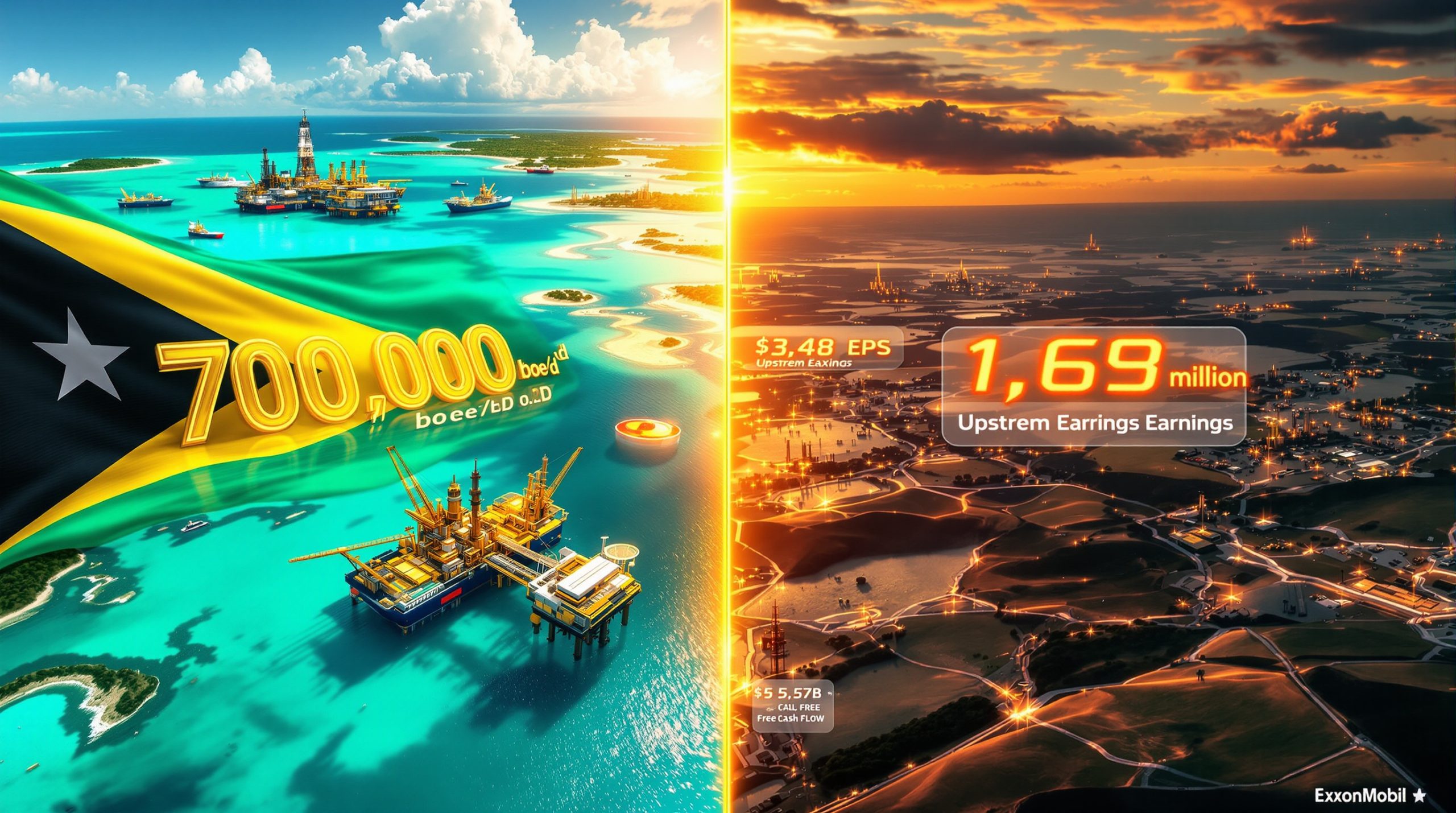What is the Louisiana LNG Project?
Project Overview and Location
The Louisiana LNG project represents Woodside Energy's most significant international expansion to date. Located strategically on the Gulf of Mexico coastline between Houston and New Orleans, this massive liquefied natural gas facility is designed to deliver 16.5 million tonnes per annum (Mtpa) of LNG when fully operational. The project, formerly known as Driftwood, marks Woodside's pivotal shift toward becoming a global LNG powerhouse beyond its traditional Australian operations.
This strategic location provides exceptional access to established gas pipeline infrastructure and shipping lanes, making it ideal for servicing both European and Asian markets. The facility will be constructed on a 1,000-acre site with deep-water access, allowing for efficient loading of LNG carriers and minimizing transportation logistics challenges.
Production Capacity and Timeline
The Louisiana LNG facility will contribute over 5% to global commodity insights and represent approximately two-thirds of Woodside's targeted 24 Mtpa total portfolio production. With construction now officially greenlit, Woodside anticipates the first LNG production from the facility to begin in 2029.
The project will be developed in phases, with initial production capacity of approximately 5.5 Mtpa in the first phase, followed by subsequent expansions to reach the full 16.5 Mtpa capacity. Each phase will employ the latest generation of modular liquefaction technology, maximizing efficiency while maintaining operational flexibility.
Once operational, the project has an expected lifespan exceeding 40 years, providing Woodside with sustained long-term production capabilities well into the 2060s and beyond. This extended operational window ensures Woodside can capitalize on evolving market dynamics throughout the energy transition era.
Why is Woodside Investing in US LNG?
Strategic Pivot from Australian Operations
Woodside's decision to pursue the Louisiana LNG project signals a significant strategic shift away from exclusively Australian-focused operations. The company has faced prolonged delays with domestic projects like Scarborough and Browse, which have been subject to political hurdles and environmental opposition.
"The Louisiana LNG project represents a game-changer for Woodside's global portfolio diversification strategy," notes CEO Meg O'Neill. "This strategic pivot allows us to balance regulatory and geographical risks while positioning the company as a truly global energy player."
By diversifying internationally, Woodside reduces its dependence on the Australian regulatory environment while accessing new markets and opportunities. This expansion also provides insulation against regional economic fluctuations and resource constraints that have historically impacted Australian LNG development timelines.
Market Demand and Customer Agreements
Strong international demand for American-sourced LNG has been a key driver behind Woodside's investment decision. The company has already secured its first offtake agreement with Germany's Uniper for 1 million tonnes per year, demonstrating the market's appetite for US gas exports.
This initial agreement represents just 6% of the facility's total capacity, leaving significant room for additional commercial partnerships. Industry analysts project that European demand alone could absorb up to 40% of Louisiana LNG's output as countries seek to reduce dependence on Russian gas supplies.
Asian markets, particularly Japan, South Korea, and emerging economies in Southeast Asia, present additional opportunities as these nations transition from coal to natural gas in their electricity generation mix. These diversified market opportunities enhance the project's revenue stability through varied contract structures and pricing mechanisms.
Regulatory Environment Advantages
The US regulatory framework currently presents fewer obstacles compared to Australia's increasingly complex approval processes for fossil fuel projects. Louisiana's pro-energy development policies and established permitting frameworks have created a more predictable investment environment.
While Woodside must navigate potential tariff implications, particularly under the current US administration, the overall business environment has proven sufficiently favorable to warrant the substantial investment commitment. The company has engaged extensively with federal, state, and local authorities to secure necessary permits and establish cooperative relationships with regulatory bodies.
Additionally, the US tax framework, including provisions for accelerated depreciation and various incentives for energy infrastructure, enhances the project's financial attractiveness compared to alternative international locations.
What are the Financial Implications of the Project?
Investment Scale and Partnership Structure
The Louisiana LNG project comes with a substantial price tag of US$17.5 billion, with Woodside contributing US$11.8 billion of the total capital expenditure. The remaining investment will come from alternative investment firm Stonepeak, which owns a 40% stake in the project.
This partnership structure provides several strategic advantages:
- Risk sharing across multiple capital sources
- Access to Stonepeak's expertise in US energy infrastructure
- Preservation of Woodside's balance sheet flexibility
- Maintenance of operational control with Woodside's majority stake
Stonepeak will contribute 75% of required investment during 2025 and 2026, helping manage near-term cash flow demands during peak construction periods. This phased funding approach aligns capital requirements with project milestones, optimizing financial efficiency throughout the development timeline.
Expected Returns and Financial Performance
Despite the significant upfront investment, Woodside projects attractive financial returns from the Louisiana LNG facility:
| Financial Metric | Projected Value |
|---|---|
| Internal Rate of Return (IRR) | 13% |
| Payback period | 7 years |
| Annual net operating cash flow (2030s) | Over US$2 billion |
| Contribution to total portfolio cash flow | Pushing beyond US$8 billion annually |
These projections are based on conservative price assumptions and account for potential market fluctuations throughout the operational lifecycle. The 13% IRR exceeds Woodside's typical hurdle rate for major capital projects, reflecting the strategic premium associated with geographic diversification and market access.
Investment Note: The expected 7-year payback period is particularly noteworthy given the scale and complexity of this infrastructure project. Industry analysts typically consider 8-10 years acceptable for comparable LNG developments.
Capital Expenditure Timeline
The capital expenditure will be carefully sequenced to optimize construction efficiency and financial management. Key expenditure milestones include:
- 2024-2025: Site preparation, permitting finalization, and initial engineering work
- 2025-2026: Peak construction period with Stonepeak contributing 75% of capital requirements
- 2027-2028: Installation of liquefaction trains and supporting infrastructure
- 2028-2029: Commissioning and preparation for first production
This phased approach allows Woodside to optimize its capital allocation while the project moves through initial construction phases. It also provides flexibility to adjust the development schedule in response to market conditions or technical challenges that may arise during construction.
How Does This Project Position Woodside Globally?
Transformation into an LNG Powerhouse
The Louisiana LNG project represents a transformative step for Woodside, potentially elevating the company from a regional player to a global LNG leader. CEO Meg O'Neill has described the project as a "game-changer" that will position Woodside as a "global LNG powerhouse" capable of delivering sustained shareholder returns over decades.
This transition fundamentally reshapes Woodside's market positioning, placing it among the top 10 global LNG producers by capacity. The company will join an elite group of energy majors with truly international production portfolios, enhancing its negotiating power with customers and strategic partners.
The project also creates a platform for potential future expansions in North America, establishing operational capabilities and market insights that could support additional development opportunities throughout the region.
Production Portfolio Restructuring
Once operational, the Louisiana facility will account for more than two-thirds of Woodside's total production, fundamentally reshaping the company's asset portfolio. This represents a significant shift from Woodside's historical production profile, which has been dominated by Australian assets, to a more internationally diversified production base.
The portfolio rebalancing offers several strategic advantages:
- Geographic diversification: Reducing exposure to any single country's regulatory or political environment
- Market access expansion: Creating direct supply routes to both Atlantic and Pacific basin customers
- Technical capability enhancement: Developing expertise in US operational models and regulatory frameworks
- Currency exposure management: Balancing USD-denominated revenues with USD-denominated costs
This restructured portfolio positions Woodside to better withstand regional market disruptions while capitalizing on global LNG demand growth across diverse customer segments.
Strategic Acquisition Success
The project's progression marks a significant win for Woodside's acquisition strategy. The company purchased the project for US$1.2 billion (including debt) from previous owner Tellurian just one year ago, demonstrating Woodside's ability to identify and execute on strategic opportunities in the global LNG market.
This acquisition represented a substantial discount to replacement cost, as Tellurian had already invested in site preparation, permits, and engineering work. By acquiring a partially developed project rather than starting from scratch, Woodside accelerated the timeline to first production while reducing overall development risk.
The successful transformation from acquisition to Final Investment Decision (FID) in just 12 months showcases Woodside's operational efficiency and strategic agility – capabilities that will be essential for navigating the complex global energy landscape in coming decades.
What Challenges and Risks Does the Project Face?
US Trade Policy and Tariff Considerations
Recent US tariff announcements have created uncertainty for international projects requiring imported materials and equipment. The current administration's focus on domestic manufacturing could potentially increase costs for specialized LNG components that must be sourced globally.
While Woodside has acknowledged these potential impacts, the company's decision to proceed indicates either that these concerns have been adequately addressed or that the project economics remain compelling despite potential tariff costs. The company has reportedly developed contingency plans, including:
- Pre-purchasing critical components before tariff implementation
- Engaging with domestic manufacturers to develop US-based supply alternatives
- Structuring contracts with flexibility to address potential regulatory changes
- Incorporating tariff cost contingencies into the overall project budget
These measures help mitigate political and regulatory risks while maintaining the project's economic viability across various trade policy scenarios.
Competition in the US Gulf Coast LNG Sector
The Louisiana LNG project enters a competitive landscape, with numerous LNG export facilities already operational or under development along the US Gulf Coast. Notable competition includes Venture Global's US$28 billion export hub along with established facilities operated by Cheniere Energy, Sempra, and other major players.
| Company | Project | Capacity (Mtpa) | Status |
|---|---|---|---|
| Venture Global | Plaquemines LNG | 20.0 | Under construction |
| Cheniere Energy | Sabine Pass LNG | 30.0 | Operational |
| Sempra | Cameron LNG | 12.0 | Operational |
| Freeport LNG | Freeport LNG | 15.0 | Operational |
| Woodside Energy | Louisiana LNG | 16.5 | FID approved |
Woodside will need to execute efficiently to maintain its competitive position in this crowded market. The company's relatively late entry means it must differentiate through operational excellence, cost management, and innovative commercial arrangements to secure its market share.
Project Execution and Timeline Risks
As with any major energy infrastructure project, Louisiana LNG faces potential construction delays, cost overruns, and technical challenges. The Gulf Coast region is particularly susceptible to weather disruptions, including hurricanes and flooding, which could impact construction schedules.
Labor availability represents another significant risk factor, as multiple major energy and industrial projects compete for skilled workers throughout the region. Woodside will need to implement robust contractor management systems and potentially offer premium compensation to attract and retain essential personnel.
Supply chain constraints for specialized equipment could also affect project timelines, particularly as global demand for LNG infrastructure components increases. Early procurement strategies and flexible engineering approaches will be essential to mitigate these potential bottlenecks.
What are the Economic and Political Implications?
Economic Impact on Louisiana
The project represents the largest single foreign direct investment in Louisiana's history, according to Governor Jeff Landry. During construction, Louisiana LNG is expected to support approximately 15,000 jobs, providing significant economic stimulus to the region.
"This historic investment will transform our energy infrastructure while creating thousands of high-quality jobs for Louisiana workers," said Governor Landry at the project announcement ceremony.
Beyond direct employment, the development will generate substantial economic benefits through:
- Local tax revenue exceeding $50 million annually
- Supporting businesses in the construction, hospitality, and service sectors
- Infrastructure improvements to roads, ports, and utilities
- Skills development and training programs for local residents
- Long-term operations creating approximately 250-300 permanent positions
These economic benefits have helped secure political support at the state level, with bipartisan backing for the project's development despite broader national debates about fossil fuel infrastructure.
US Energy Export Strategy
Louisiana LNG is the first greenfield US LNG project to reach Final Investment Decision (FID) in nearly two years, making it strategically important for America's energy export ambitions. The project aligns with broader US policy goals of expanding LNG export capacity to supply allies and trading partners while strengthening the country's position in global energy markets.
The facility's development comes at a pivotal moment in global energy geopolitics, with European nations actively seeking alternatives to Russian natural gas supplies. American LNG has emerged as a critical component of Western energy security strategy, enhancing the project's strategic importance beyond purely commercial considerations.
The Biden administration's temporary pause on new LNG export permits has increased the value of already-approved projects like Louisiana LNG, potentially creating windfall benefits for Woodside as export capacity constraints limit new market entrants.
Australian Energy Policy Implications
Woodside's international expansion may send a signal to Australian policymakers about the consequences of regulatory uncertainty and political opposition to fossil fuel projects. The company's willingness to commit substantial capital to overseas ventures rather than domestic opportunities could influence future energy policy discussions in Australia.
Industry observers note that Australia risks losing investment to more welcoming regulatory environments, potentially impacting job creation and tax revenue. Woodside's decision could become a reference point in ongoing debates about balancing environmental objectives with economic development.
The project also raises questions about Australia's future competitiveness in global LNG markets, particularly as new supply sources emerge with potentially lower production costs and more favorable regulatory conditions.
How Does This Project Fit into Global Energy Transition?
LNG's Role in Energy Transition
While the world moves toward renewable energy sources, LNG is widely viewed as a transition fuel that can replace higher-emission coal in electricity generation. Woodside's investment in Louisiana LNG positions the company to supply this transition fuel to markets in Europe and Asia that are working to reduce carbon emissions while maintaining energy security.
Natural gas produces approximately 50-60% less CO₂ emissions than coal when used for power generation, making it a preferred option for countries seeking immediate emissions reductions while developing renewable capacity. This "bridge fuel" role is expected to sustain LNG demand through the 2030s and 2040s, aligning with Louisiana LNG's operational timeline.
Recent geopolitical developments, particularly in Europe, have reinforced natural gas's strategic importance, potentially extending its transition role longer than previously anticipated as countries prioritize energy security alongside decarbonization goals.
Long-term Asset Viability
With a projected operational life exceeding 40 years, the Louisiana LNG facility will likely need to navigate an evolving energy landscape as decarbonization efforts intensify globally. Woodside's confidence in committing to such a long-lived asset suggests the company anticipates sustained demand for natural gas throughout the energy transition period.
The facility's design incorporates flexibility to adapt to changing market conditions, including potential future modifications to accommodate hydrogen blending or carbon credits debate technologies. This adaptability enhances the project's long-term viability as energy markets evolve.
Industry forecasts support this perspective, with the International Energy Agency projecting continued LNG demand growth through 2040, even in scenarios with aggressive climate policies. This demand profile provides a solid foundation for Louisiana LNG's multi-decade operational plan.
Carbon Management Considerations
Although not explicitly detailed in current project announcements, Woodside will likely need to address carbon management strategies for the Louisiana LNG facility as global pressure for emissions reduction continues to grow. Future competitiveness may depend on the project's carbon intensity relative to other global LNG suppliers.
Potential carbon management approaches could include:
- Implementation of energy-efficient liquefaction technology
- Electrification of compression equipment using low-carbon power sources
- Carbon capture and storage (CCS) integration in later project phases
- Methane leak detection and mitigation programs throughout the supply chain
- Carbon offset partnerships to achieve "carbon-neutral LNG" deliveries
These considerations will become increasingly important as major LNG customers, particularly in Europe and Northeast Asia, implement carbon border adjustment mechanisms and emissions-based procurement criteria.
What Does This Mean for Woodside Investors?
Portfolio Diversification Benefits
For Woodside shareholders, the Louisiana LNG project represents significant portfolio diversification, reducing the company's exposure to Australian regulatory risks while opening access to new markets. This geographical diversification may help stabilize long-term investment strategies and create new growth opportunities.
The project transforms Woodside from a primarily Australian producer to a truly international energy company, potentially warranting a valuation multiple more aligned with global majors rather than regional producers. This strategic repositioning could support share price appreciation independent of commodity price movements.
Additionally, the dollar-denominated revenue stream provides natural hedging against currency fluct
Want to Stay Ahead of Major ASX Mineral Discoveries?
Discover why mineral strikes like De Grey Mining and WA1 Resources led to extraordinary returns by exploring Discovery Alert's dedicated discoveries page at https://discoveryalert.com.au/discoveries/ and gain real-time notifications of significant ASX announcements through their proprietary Discovery IQ model.




